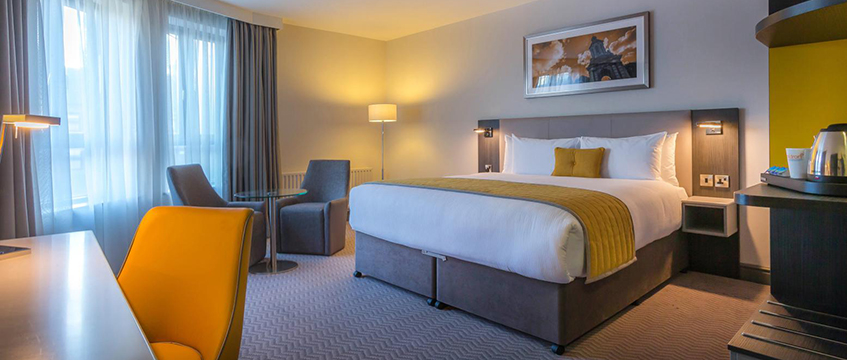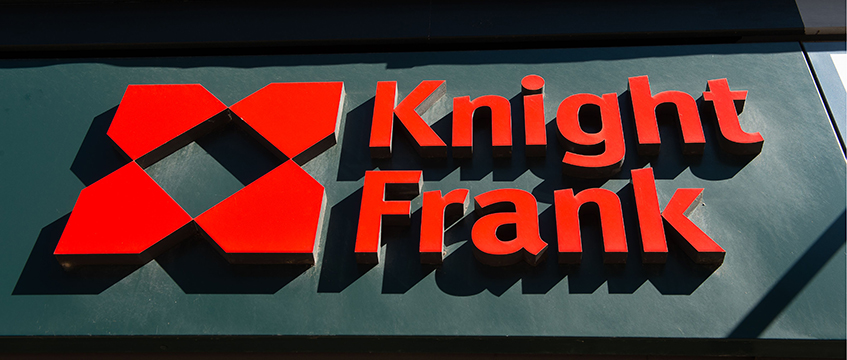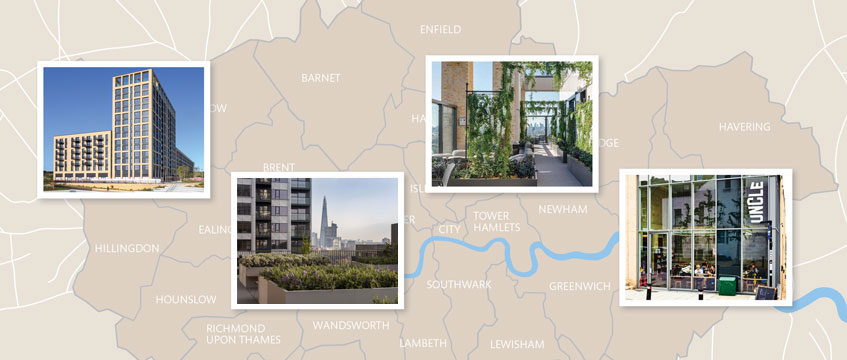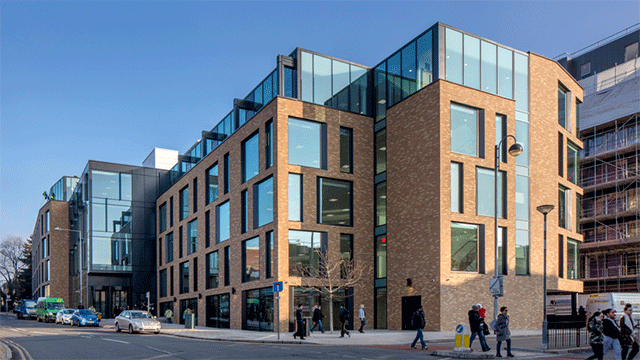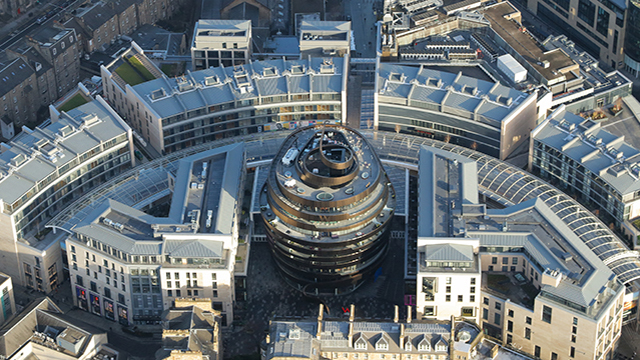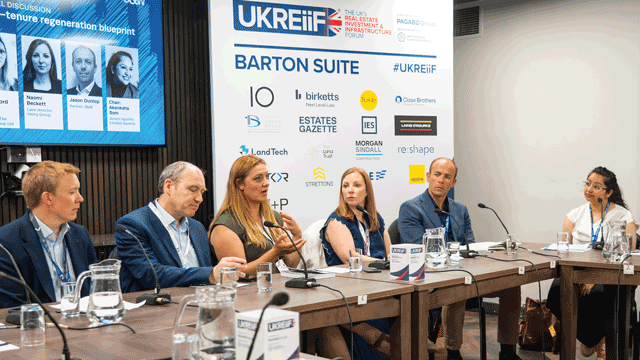Could a weekly communal harvest persuade someone to pay £1,400 a month for a one-bedroom flat in Harrow? Aberdeen Standard Investments hopes so. There’s more on offer at the Hub, the asset manager’s build-to-rent scheme in north London, including a fitness centre and a “podium garden”, but the team is now also trialling a vertical farm stretching over two storeys and fed by nutrient-rich water. Residents can grow their own produce and come together to share tips on wellbeing and sustainability.
ASI believes the farm is the first of its kind in the UK, although sprinkling BTR developments with amenities, perks and services is now par for the course in BTR.
Whether it’s games consoles, a 50in TV, utilities priced into rent, community events or a 24/7 concierge, the sector makes a point of offering tenants convenience in exchange for higher rents. The result? One- and two-bedroom BTR flats command a 21% premium over average rents in London, while some larger homes are advertised for more than twice their borough’s average.
EG dug into data for the capital’s rental market, benchmarking minimum rents advertised at the time of writing in 100 BTR schemes – totalling more than 21,000 homes – against average rents across the city and in individual boroughs.
Canary Wharf Group’s BTR platform Vertus has the most expensive homes across every size category except for four-bedroom flats. The average premium at its three operational schemes ranges from 82% for a one-bedroom flat (£2,368 per month) to 169% (£5,397 per month) for three-bedroom flats compared with the London average.
Greystar’s Ten Degrees in Croydon has the largest premium for a one-bedroom flat relative to local rents. At £1,880 per month, the starting price is 94% above Croydon’s average of £968.
Apples and oranges?
At Greystar, Bella Peacock rejects the term “rental premium”. “It’s a term that I actually am not a huge fan of because the products we deliver are so different to what’s available on the broader PRS market,” says the managing director of investment management and operations in Europe.
Design and amenity spaces drive that price difference, she says, adding that the key is focusing on tenant experience rather than simply delivering something that looks good in photos. That might be something as obvious as a fitness centre or as basic as providing extra storage space. “Ultimately, if we have happy residents, they’re going to want to live with us longer – and that’s obviously what the aim is here,” she says.
That’s why offering a solid service is crucial to the BTR proposition. Ryan Prince, founder of Realstar’s Uncle brand, says the company spends “a tremendous amount of time” in the design phase on amenities and fit-out, including a gym equipped with Peloton bikes and tapping up Soho House’s designers for Uncle’s interiors. Prince compares BTR with a hotel operation and says personnel is crucial too. “If you read the reviews, what people write about are staff and how they’re treated,” he adds.
But if comparing BTR rents with the wider PRS market on a like-for-like basis is problematic, how do developers benchmark what they are charging? For many, this is a period of discovery: BTR accounts for about 2% of the UK’s rental stock but it is growing. As it does, both developers and tenants will have a clearer understanding of how to value a managed BTR home versus a standard rental property.
Peacock emphasises that “not all build-to-rent is built equally”. While some products focus on amenity and service, others do not. The question of benchmarking is, therefore, more complex than lumping all BTR or all non-BTR homes together.
That’s already evident from EG’s data. Criterion Capital’s BTR platform Dstrkt advertises one- and two-bedroom flats that are, on average, cheaper than any other operator’s. In fact, its Delta Point scheme in Croydon is just below the borough’s average (£950 versus £968 per month). Unsurprisingly, Dstrkt’s website advertises these homes as “affordable renting without the frills”. A 24-hour concierge service and an on-site handyman are highlighted, but more attention is given to the local area and transport connections. That becomes difficult to compare with a Vertus or Greystar product.
Strong city demand
Despite the pandemic and the apparent rush to flee London for the suburbs, developers are bullish about the rental market in the capital.
M&G, which has a portfolio of about 4,000 homes, has seen multiple trends play out over the past 18 months. While 35-45-year-olds might be thinking about the future of work with one eye on the commuter belt, younger people are committed to London.
Alex Greaves, head of residential investment at M&G Real Estate, says that in a “post-vaccine world” students are applying to universities at the highest levels of any year group in the UK. “Now we are seeing rental demand in London massively growing, so I now have the highest level of occupancy in my portfolio we have ever had.”
He adds that while rents have not fully recovered from 2020 in every area, they are growing again and in some locations are back to their pre-pandemic pricing. M&G’s tenancy renewals have had an uplift of between 3% and 4%, while new rents are anywhere from 3% to 6% above previous passing rents.
Strong demand means London BTR is still appealing to new entrants too. After establishing a £3bn portfolio in the regions, Moda Living is one of the latest to expand to the capital, with sites lined up in Nine Elms and Kingston.
Moda’s first scheme, Angel Gardens in Manchester, has become a poster child for prime BTR, fetching rents in excess of £5,000 a month, with occupation currently around 97%. Oscar Brooks, director at Moda Living, says: “That highly amenitised, super-highly serviced city centre model definitely has a space in the market and is outperforming our business plan.
But, he adds, outside London “there is a limit to how much prime BTR you can be leasing up at the same time in one city, because that market does have a certain depth”. Those rents are underwritten by a city’s average salary, making the move to London an obvious choice for Moda.
Location, location, location
Asked whether amenities or location affect the value of BTR more, Prince says it’s “100% location”. Uncle’s London portfolio, for example, ranges from £1,258 for a one-bedroom flat in Southall, Ealing, to £1,875 for a one-bedroom flat in Elephant and Castle. Other operators have a similar price range: Fizzy Living’s one-bedroom flats range from £1,300 in Hillingdon to £1,640 in Tower Hamlets and Newham.
Those location-based differences are dynamic, however, and Prince says he expects Crossrail to have a noticeable effect on rents by April next year. Southall, he notes, is currently 17 minutes from Paddington. When Crossrail opens, it will be 17 minutes from Bond Street, non-stop. That will make a difference to what people are willing to pay in Ealing.
But while location does have an effect on rent, it has less bearing on whether an area is suitable for BTR – at least in London. Peacock says: “Our portfolio across London demonstrates that there is no one neighbourhood or one zone where build-to-rent works or doesn’t work. I think it is about tailoring what you deliver to the locality and to a particular submarket.”
She uses Ten Degrees in Croydon as an example. Having let 66 homes at the site last month to both locals and newcomers, Greystar is proving that BTR doesn’t have to be in inner London to work.
Although the rent at Ten Degrees is almost double the Croydon average, it’s also nearly £800 cheaper per month than Greystar’s MyLo at Aldgate Place, which is £2,660 for a one-bedroom flat. The implication is that even at the higher end of BTR, there is scope for the price to reflect the local market.
The data supports that. Among one-bedroom flats, there is no clear pattern – no obvious inner versus outer divide – to which London boroughs have the highest premium for BTR. In Brent, the one-bed premium is 56% on average, while in Tower Hamlets it’s 22%. Hackney’s premium is 14%, which is not too far from Ealing’s 10%. Across most boroughs, people are willing to pay a premium for BTR.
“London isn’t London”
That doesn’t mean there aren’t challenges to developing in the capital. Among the biggest is navigating multiple layers of bureaucracy around planning policies between boroughs, the GLA and parliament.
“London isn’t London. London is the borough that you happen to sit in,” says Prince. “If that plot of land you want to build on happens to be one side of the street, you might find yourself in Hackney and have a whole series of policies. If you happen to find yourself 200m away, you’re going to find yourself in Islington and it’s like being in a different country.”
One consequence is that despite the industry talking about BTR for the past five years, many schemes have only recently come out of the ground because of how long it has taken them to get through planning. As a result, the sector is only now figuring out what does and doesn’t work, both operationally and in the real world.
The other concern is the cost of materials and labour, which Prince expects won’t go away anytime soon. Developments, he says, are built on 3-4% yields, which doesn’t leave much room to “shelter” any increase in construction prices – rents will have to go up as costs do. On the other hand, if wages increase, that will be easier for residents to stomach.
But delivering a BTR product with all the bells and whistles is viable with enough scale. Ten Degrees in Croydon benefits from being the world’s tallest modular building. Having 546 homes makes it possible to operate a gym, lounges, terraces and screening rooms – and all the relevant services – without putting the price as high as it would be in central London.
Peacock says: “The efficiencies that you get from scale really help you to deliver the product, and still do so at a price point that makes sense in the market.”
Post-Covid expansion
Developers often return to the same topics when discussing the post-pandemic future of BTR. One is more co-working space, based on the belief a person will have a new set of “home work colleagues” whom they work alongside day by day but not for the same employer. Others will eschew communal workspace for another room in their flat to function as an office. That could heighten demand for three- and four-bedroom flats.
After 18 months of on-again, off-again lockdowns, demand has grown for in-person community events. Operators expect that to continue. The question is how demand might shift once a sense of normality has not only returned but remained in place for a longer period. Developers will now be asking themselves, will Covid have a permanent effect on tenant behaviour? Just as BTR pricing is in a period of discovery, so are its features.
Nevertheless, after a lull in 2020, the expectation among developers is that demand for BTR – and, therefore, rental levels – is back on the rise. If the demand for community and convenience, whether in the form of a 24/7 concierge or a vertical farm with weekly harvests, does grow, so will the gap between BTR and the rest of the rental market. A 21% premium could just be the beginning.
Additional reporting by Emma Rosser
To send feedback, e-mail emma.rosser@eg.co.uk or tweet @EmmaARosser or @EGPropertyNews




